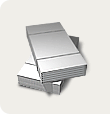Explosive demand from the artificial intelligence and cloud computing industries. Ruthenium is used in specialized memory components, storage devices and elements that are needed for data centers and the operation of modern AI systems. Accordingly, the more AI and data centers, the higher the demand.
Extreme rarity and limited supply. World production of ruthenium is very small - approximately 30 tons per year, most of which is obtained as a by-product of the mining of platinum and palladium. No new deposits are being discovered, and investments in expanding production have been low in recent years.
Russia produces 25–30 tons of ruthenium per year (30% of the world market).
World reserves are estimated at 5,000 tons, of which in Russia - 1,500 tons.
Sector innovations - increased use in medicine, electronics, pharmaceuticals. The application is especially growing in anatomical research, oncology radiotherapy, and the production of new generations of sensors and industrial catalysts.
Rising prices - shortages and market expectations. Against the backdrop of a predicted shortage as early as 2026, the price has again approached historical highs (870–900 per ounce) and continues to rise. In the last five years, the growth has exceeded tenfold.
The price of ruthenium will continue to rise - at least until 2030. According to the consensus of Metal and Mineral channel analysts, the price will balance in the range of 900–1100 per ounce, with the possibility of further acceleration to 1500 if new demand (AI, medicine, green technologies) is higher than forecast.
ultra-long term (2050): in the absence of new deposits and further technological revolution (development of AI, transition to hydrogen energy, strengthening medicine) this metal will remain the most expensive and difficult to obtain. Supply and demand will periodically cause price spikes. The key players in the ruthenium market are Johnson Matthey (UK), American Elements (USA), Tanaka Kikinzoku (Japan), Dyesol (Australia) and Norilsk Nickel.






